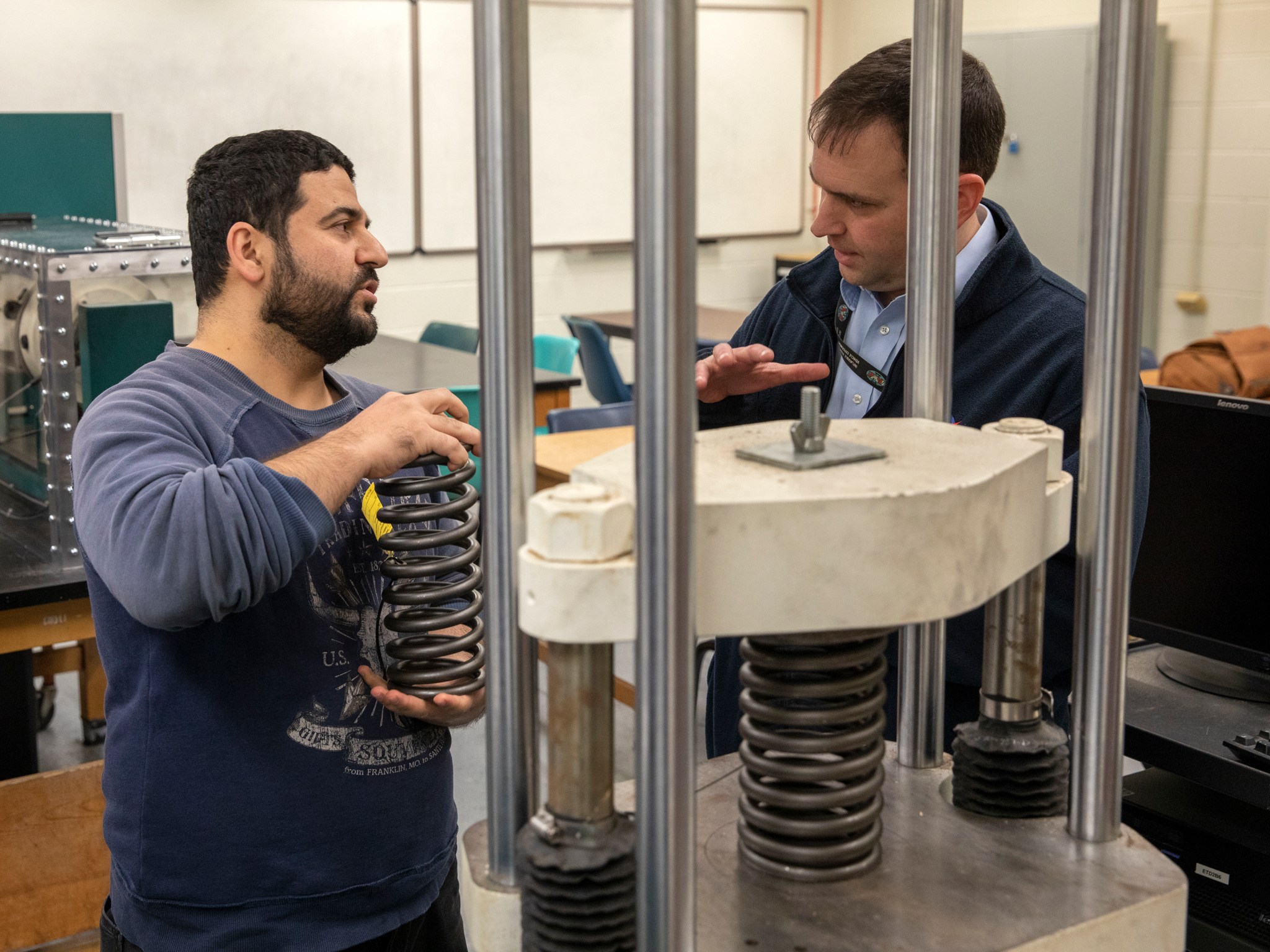Testing of a key component of NASA’s Low-earth Orbit Flight Test of an Inflatable Decelerator (LOFTID) is on track, thanks in part to Old Dominion University (ODU) in Norfolk, Virginia.
LOFTID is a cross-cutting technology designed to enable delivery of heavy cargos to any planet with an atmosphere. In a few years, the project will launch a six-meter inflatable heat shield into low-Earth orbit on an Atlas V rocket and collect data during re-entry.
To get ready for its first flight test, LOFTID is conducting testing of an engineering version of the spring that will release the data recorder during the demonstration. Testing must be conducted continuously for a period of 60 days to capture the necessary data.
“These tests are really important because they allow us to move forward with design and build of the Ejectable Data Recorder (EDR) mechanism,” said Joe Del Corso, deputy project manager for LOFTID at NASA’s Langley Research Center in Hampton, Virginia.
After NASA’s facilities were closed during the government furlough earlier this year, and LOFTID’s spring testing was halted, the team reached out to ODU civil and environmental engineering professor Zia Razzaq for support so the test could continue uninterrupted.
“They stepped up and lent us a Tinius Olsen materials testing machine to be able to test the spring and keep LOFTID on schedule,” said Robert Wagner, EDR lead for LOFTID.
The 60-day compression test of the spring ensures the load rating is comparable to what is expected and needed to be able to eject the data recorder through the shock layer of the recovery vehicle during the flight test. The duration of the creep test is set to encompass the maximum time the data recorder should remain compressed prior to the launch of the heat shield.
As shown in the photo, the spring (positioned in the Tinius Olsen machine) is compressed 2.71 inches down until a load of 979 pounds is reached. ODU graduate students monitored the load daily and recorded the load reading on a weekly basis. The testing at ODU has been successful with data results as showing no relaxation under load.
“It’s a pleasure and honor for us to work for NASA,” said Herish Hussein, civil engineering Ph.D. candidate at ODU. “This is my first time working with NASA and I have high respect for and have loved NASA since I was in high school.”
The tests conducted at ODU for the engineering development unit of the ejection system will be repeated for the flight unit.
“The capability to test our reentry vehicle hardware at ODU provided a great backup capability to the LOFTID project,” added Barry Bryant, project manager for LOFTID. “I really appreciate the approach Robert and ODU came up with to support the LOFTID orbital flight technology demonstration mission.”
The LOFTID project is a part of the Technology Demonstration Missions program funded by NASA’s Space Technology Mission Directorate. The project is managed by NASA’s Langley Research Center in Hampton, Virginia.



























